Best Places to Visit in Arizona

Searching for the best places to visit in Arizona? Well, you are in the right place! Arizona is a land of striking contrasts, where red rock canyons, desert landscapes, and mountain escapes come together to create some of the most unforgettable destinations in the U.S. Having explored the state on a four week road trip, I’ve found that the Grand Canyon State offers everything from world-famous landmarks to hidden gems that capture the spirit of the Southwest. Here are my favorite stops and I hope you will enjoy them too.
I discovered breathtaking natural wonders, vibrant cities filled with culture and history, and quiet escapes perfect for relaxation during my four weeks of road tripping across the state. From family-friendly adventures to outdoor thrills and scenic road trips, Arizona has something for every kind of traveler. Here are the places I recommend, and I think you’ll enjoy them too.
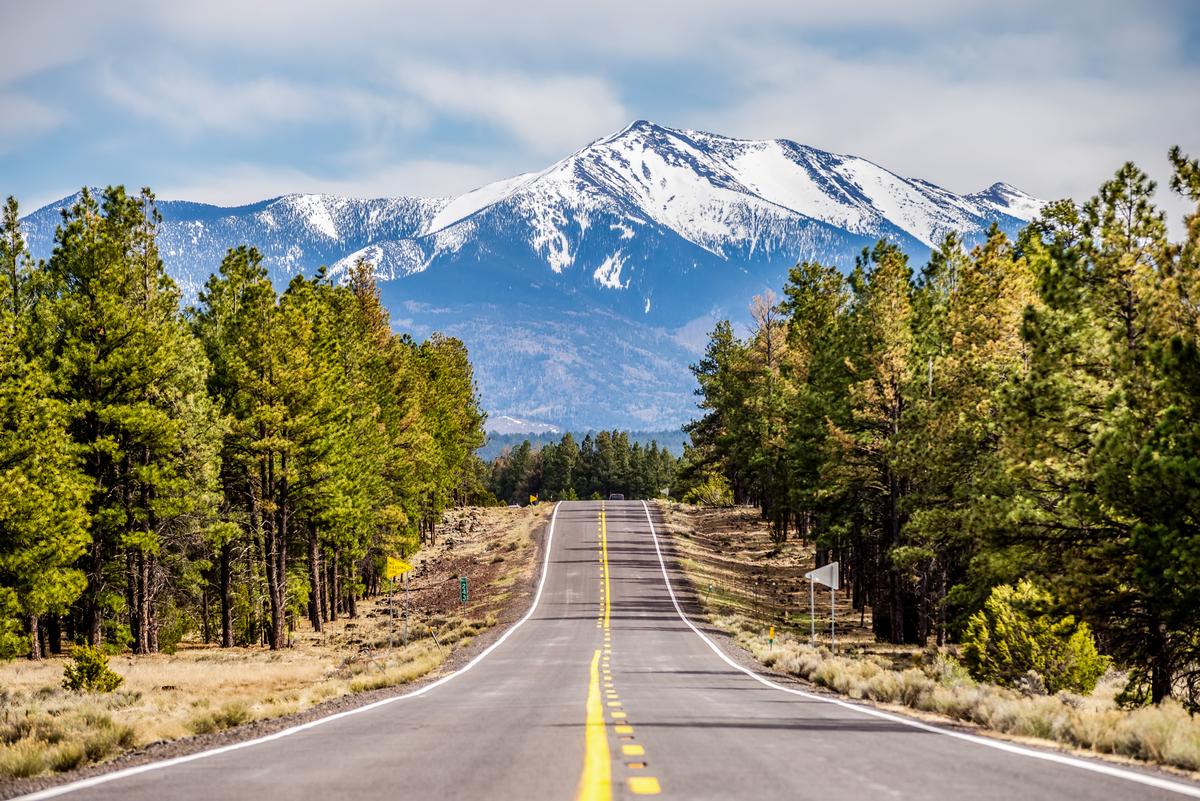
1. Flagstaff
I loved how this city blended its rugged mountain-town roots with a lively, creative spirit and I think it's one of the best places to visit in Arizona. Why? First off, it has a lovely vintage downtown that we had so much fun exploring. In addition, we were surrounded by beautiful nature and many outdoor activities.
After landing at Flagstaff Pulliam Airport, I grabbed a rental car and based myself at the boutique Weatherford Hotel for three days, a historic gem with creaky staircases and live music drifting through its saloon-style bar. The city is both laid-back and energetic, a crossroads where desert, forest, and mountains meet.
You can hike lava-carved trails in Sunset Crater Volcano National Monument, explore ancient cliff dwellings at Walnut Canyon, and walk around historic downtown with its murals, bookstores, and craft beer spots. Locals told me winter turns Flagstaff into a snowy playground, with Arizona Snowbowl offering powdery slopes for skiing, snowshoeing, and sledding.
- Location: Northern Arizona, in the highlands of the Colorado Plateau near the San Francisco Peaks, south of the Grand Canyon and along historic Route 66
- Map & Directions
What I loved best:
Stargazing at Lowell Observatory was my personal highlight.
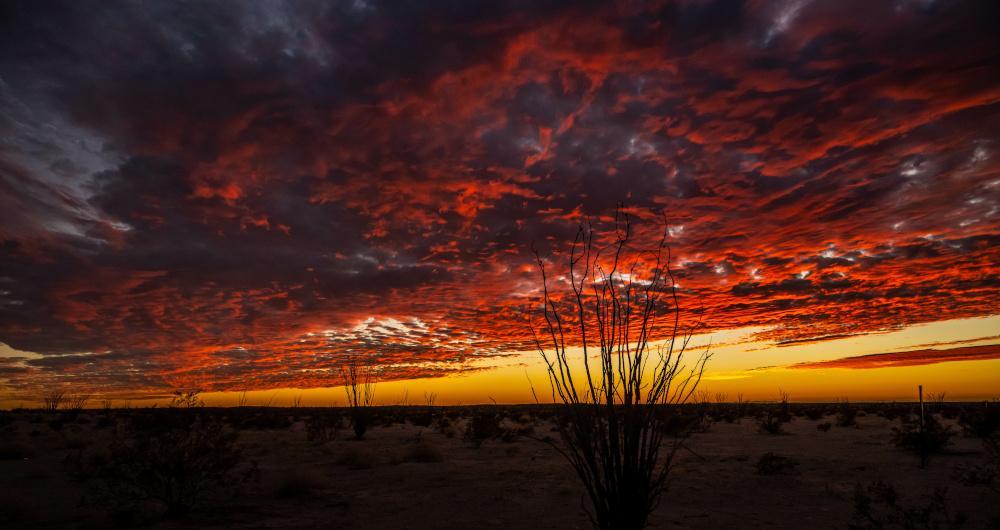
2. Yuma
This is one of my favorite desert cities to visit in the USA because it offers lots of sun, striking desert scenery, and walkable historic districts. I love that it’s incredibly easy to get around and there are great food and coffee stops everywhere.
I settled into the 3-star Hilton Garden Inn overlooking the river. For three warm, golden days, the city felt easygoing and full of hidden stories. You can kayak along calm stretches of the Colorado, check out the fascinating Yuma Territorial Prison State Historic Park, stroll through the restored Yuma Quartermaster Depot, and sample local date shakes at a family-run farm stand.
Locals told me that winter is peak season here, when snowbirds flock south for sunshine, lively farmers markets, and festivals, while summer’s extreme heat turns Yuma into a quiet desert retreat.
- Location: Southwestern Arizona, along the Colorado River near the California and Mexico borders, in the Sonoran Desert
- Map & Directions
What I loved best:
My personal highlight was strolling through the farmers market and picking up tasty snacks.
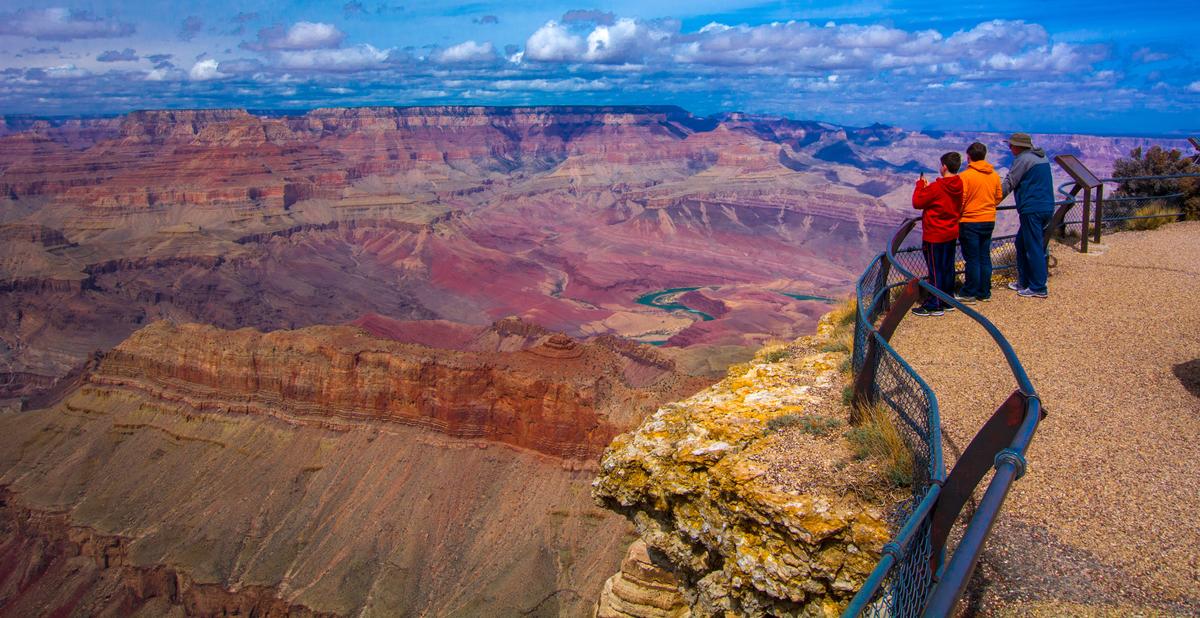
3. Grand Canyon
Stretching out for miles in every direction, this is one of the most unspoiled and mind-blowing landscapes I’ve ever seen, and I think it’s one of the absolute best places in the Southwest to feel humbled by nature.
Flying into Flagstaff Pulliam Airport, I rented a car and based myself at the historic El Tovar Hotel perched right on the canyon rim. For seven unforgettable days, I explored the South Rim’s iconic viewpoints, from sunrise at Mather Point to golden-hour panoramas from Hopi Point. I hiked below the rim on the Bright Angel Trail, learning just how immense the canyon truly is with every switchback, and marveled at centuries of human history at the Tusayan Pueblo Site.
Winter transforms the canyon into a serene, snow-dusted cathedral, while summer draws throngs of adventurers braving rafting trips down the roaring Colorado River.
- Location: Southwestern Arizona, along the Colorado River near the California and Mexico borders, in the Sonoran Desert
- Map & Directions
What I loved best:
Evenings were a personal highlight, while watching the sky turn lavender and stars come out over the rim.
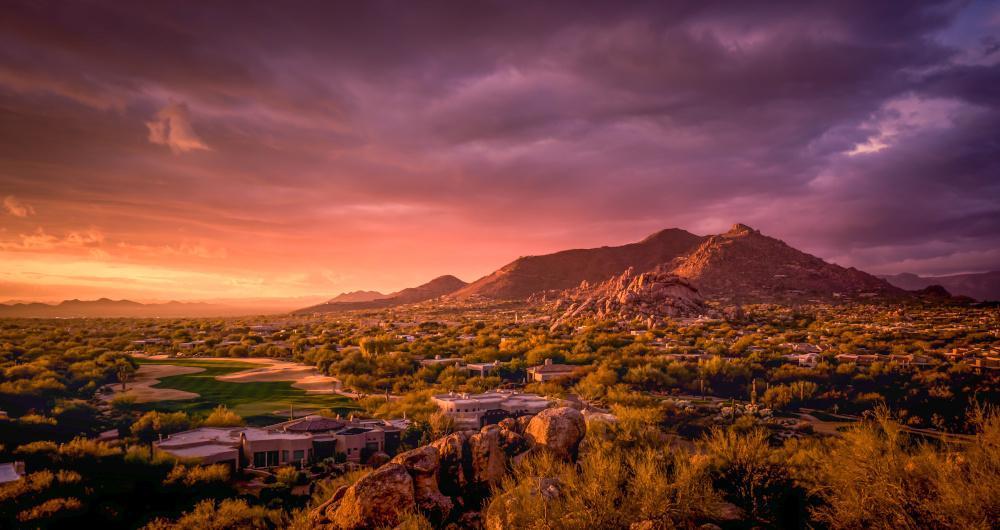
4. Scottsdale, Arizona
Nicknamed "The West's Most Western Town", this is one of my favorite places to visit in Arizona. Why? I love how it offers a bit of everything—sunny skies, desert trails, stylish shops, and luxury resorts when I'm in the mood for some serious pampering.
We checked into the stylish 5-star Andaz Scottsdale Resort & Bungalows for three days, tucked against the Camelback Mountain backdrop. For three days, I blended outdoor escapes with urban delights. Another great resort is the Scottsdale Resort & Spa, a AAA Four Diamond winner.
You can climb up Camelback’s Echo Canyon Trail at sunrise, wander through cutting-edge contemporary art at the Scottsdale Museum of Contemporary Art, shop and dine in the sleek Scottsdale Waterfront, and lose myself in the vibrant colors and textures of Old Town’s art walks and Native crafts. One of my favorite stops was Western Spirit: Scottsdale’s Museum of the West.
Evenings stargazing and farm-to-table plates at Arcadia Farms Cafe bursting with flavors were my personal highlights.
- Location: Central Arizona, in the Sonoran Desert, just east of Phoenix in the Greater Phoenix metropolitan area
- Map & Directions
What I loved best:
Strolling through Scottsdale Waterfront for 90-minutes was my personal highlight.

5. Bisbee
This hillside town in the Mule Mountains is one of my favorite places to visit when I want a weekend full of variety—art, history, food, and nature.
After flying into Tucson International Airport, I rented a car and made the scenic drive southeast through rolling desert and mountains before reaching Bisbee’s tucked-away canyon setting. I based myself at the 3-star Copper Queen Hotel for three days, a storied landmark with creaky hallways, ghost lore, and balconies overlooking downtown. I explored the Queen Mine on a hardhat tour, wandered Bisbee’s labyrinth of staircases and alleyways, and browsed eccentric galleries and vintage stores.
- Location: Southeastern Arizona, in the Mule Mountains near the Mexico border
- Map & Directions
What I loved best:
Listening to live music drifting from atmospheric taverns and then stopping for dinner at Old Bisbee Brewing Company was my favorite highlight!
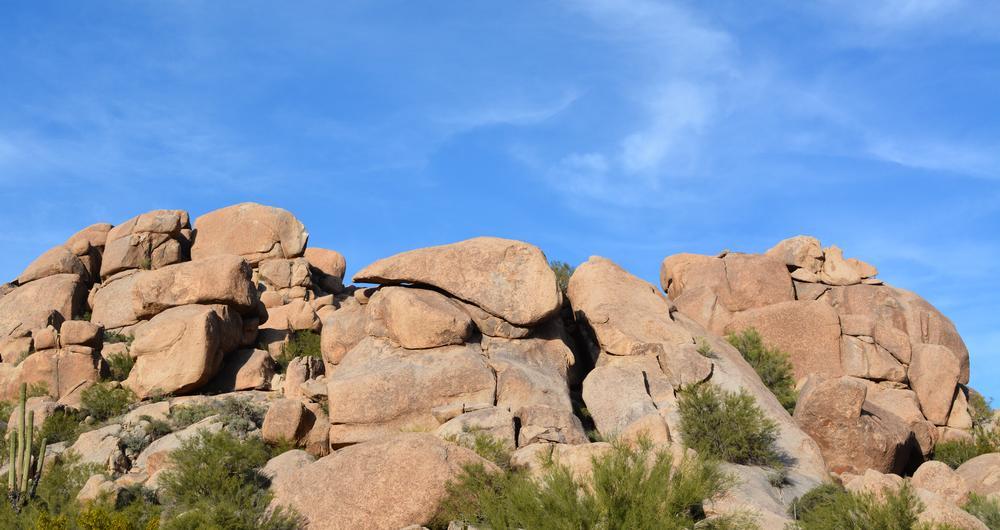
6. Cave Creek
Founded in 1870, this place wowed me with its rugged desert landscapes, Wild West flair, and quirky mix of cowboy culture and creative spirit. Tucked into the foothills of the Sonoran Desert, this Arizona town was truly special, with saguaros standing tall against crimson sunsets.
Just a 40-minute day trip drive north of Phoenix brought me to this eclectic desert enclave where saloons, art galleries, and dusty trails sit side by side. We stayed at 2-star Prickly Pear Inn for two days. Who wouldn't enjoying exploring the spirited Frontier Town? You can go treasure-hunting through the funky shops along Cave Creek Road, and two-stepping to live country music at Harold’s Corral. Watson’s Hat Shop was a unique stop for me - they make custom hats using rare hat-making equipment from the 1860s!
- Location: North of Phoenix in central Arizona, in the Sonoran Desert foothills
- Map & Directions
What I loved best:
Hiking up Black Mountain for sweeping valley views.
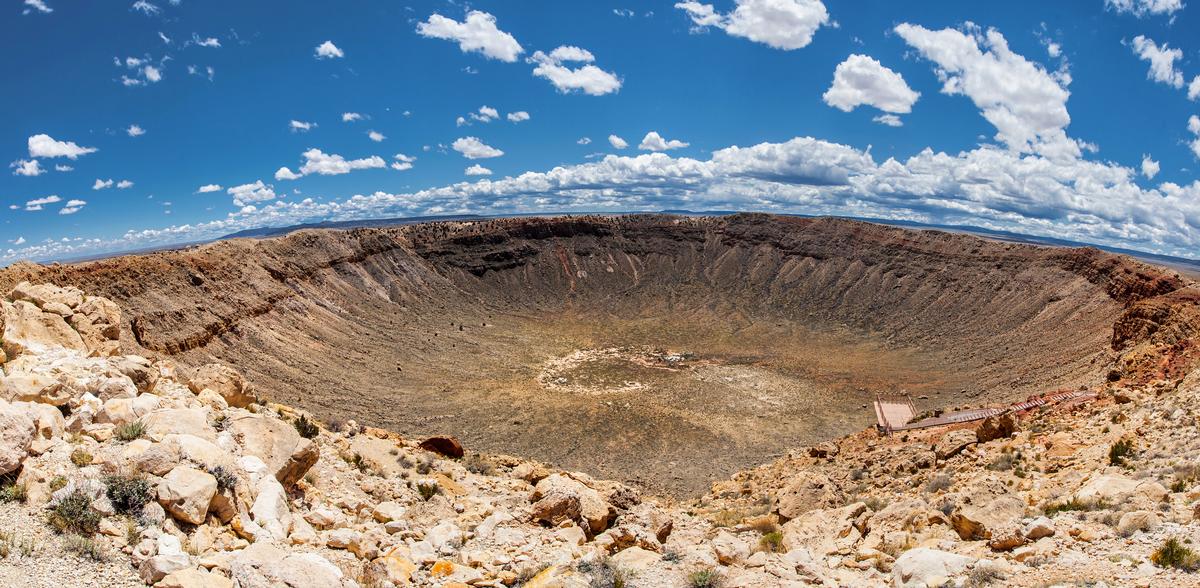
7. Barringer Crater, known as Meteor Crater
Rising from the high desert plains east of Flagstaff, this is one of the most awe-inspiring and unspoiled geological sites I’ve ever visited, and I think it's one of the absolute best natural wonders in Arizona. Why? Barringer Crater offers breathtaking, unobstructed views of a perfectly preserved meteor impact site!
I loved the way its steep walls, vast basin, and wide-open desert surroundings create a feeling of raw, untouched Earth that’s unlike anywhere else.
Formed about 50,000 years ago, this place that left me absolutely awestruck. Unlike the human-made charm of small towns, this stop was about nature’s raw, cosmic power. Standing on the rim, gazing into a nearly mile-wide, 550-foot-deep cavity blasted into the high desert, I felt both tiny and electrified.
A quick 40-minute drive east of Flagstaff brought me to this stark and otherworldly site. I spent 3 hours here, starting with the excellent Discovery Center & Space Museum, where meteorite fragments and interactive exhibits set the stage.
- Location: Northern Arizona, east of Flagstaff on the Colorado Plateau
- Map & Directions
What I loved best:
Joining a guided rim tour, tracing the crater’s edge and soaking up sweeping views across the Painted Desert was my favorite highlight. The scale is so vast, my eyes kept tricking me into thinking the bottom was closer than it was...it’s the ultimate optical illusion of space meeting Earth.
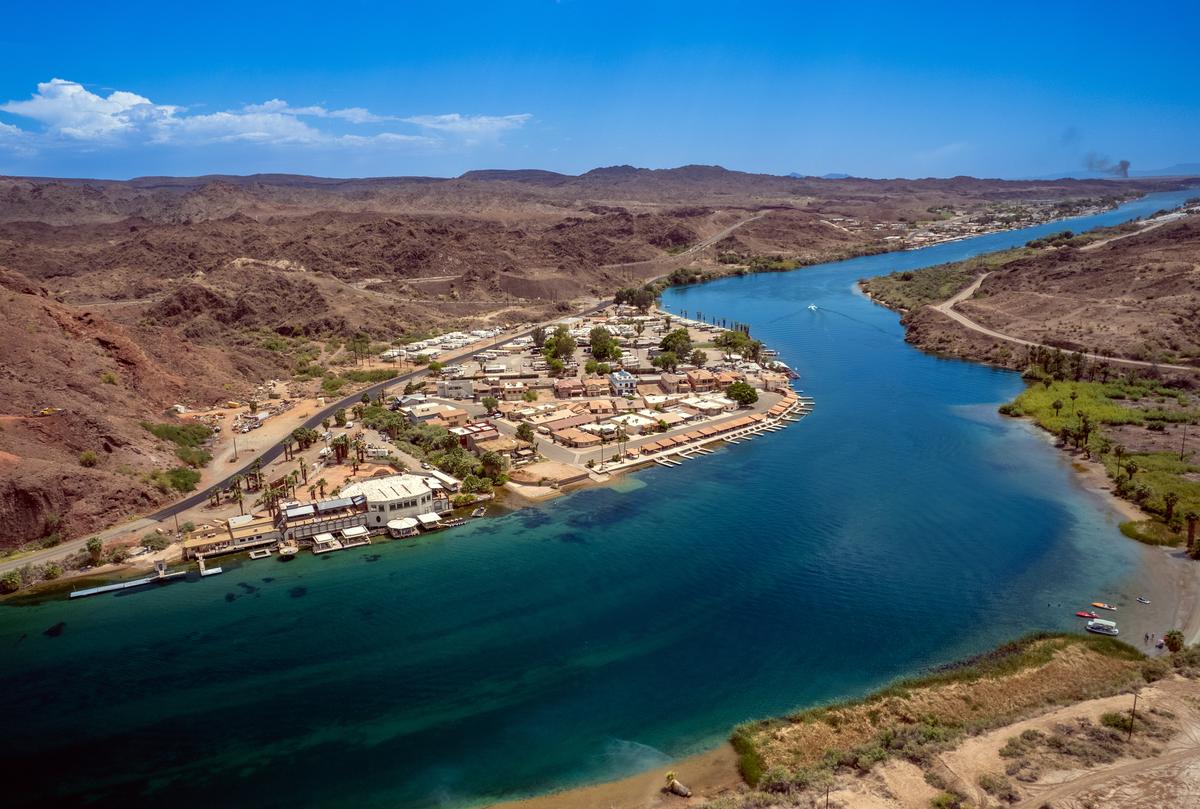
8. Parker, AZ
This place charmed me with its laid-back river-town vibe, sun-drenched desert backdrop, and adventurous spirit along the Colorado River. Parker is pure Southwestern oasis—where palms and speedboats outnumber pines and horses.
Just a 2.5-hour drive west from Phoenix (or about 45 minutes south of Lake Havasu City) brought me to this small but lively community perched on the Arizona–California border. I based myself at the 3-star BlueWater Resort & Casino, right on the river, for two days of sun, water, and desert exploration.
Days were filled with boating and jet skiing on the Colorado, cruising through scenic Parker Strip canyons, grabbing casual bites at dockside bars, browsing quirky shops downtown, and taking a sunset drive out toward the wild rockscapes of the Buckskin Mountains.
- Location: Western Arizona along the Colorado River, near the California border
- Map & Directions
What I loved best:
Nights lit up with live music, slot machines, and the glow of neon along the water, a standout.
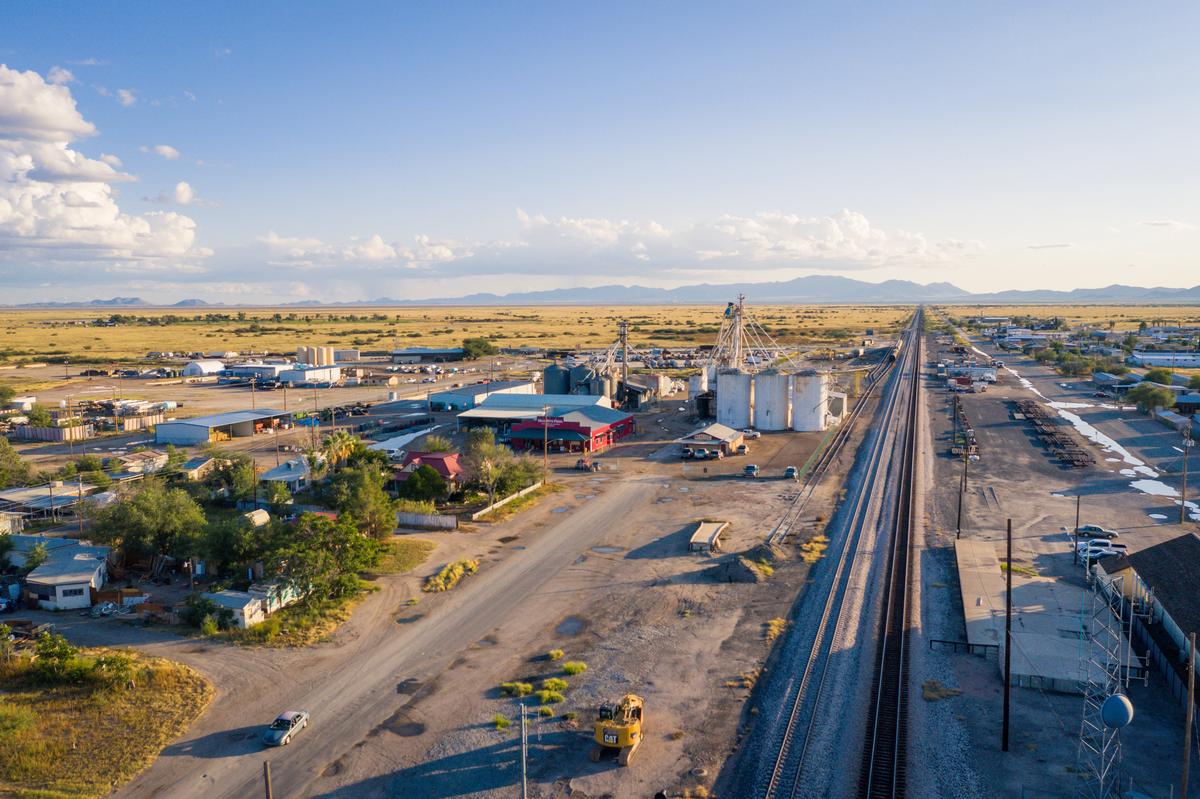
9. Willcox, AZ
There’s something about this town that instantly made me feel like I’d uncovered a desert gem tucked away in southeastern Arizona. Surrounded by open plains, volcanic peaks, and dramatic skies, Willcox has a quiet magic that sneaks up on you, and it quickly became one of my favorite affordable day trips in Arizona. I thought it truly was an underrated destination—warm, scenic, and full of that wide-open Arizona wonder!
Just an hour’s drive east of Tucson, Willcox became my base for two easygoing days. I stayed at the 2-star Arizona Sunset Inn & Suites for two days, waking to sunrises over the Dos Cabezas Mountains. My days were spent wandering the historic downtown—with its Rex Allen Museum (honoring the hometown “Arizona Cowboy”), browsing antique shops, and sampling local vintages at downtown tasting rooms. Willcox is, after all, the heart of Arizona’s wine country, with most of the state’s grapes grown in the surrounding Sulphur Springs Valley. After we relaxed on the outdoor patio at Zarpara Vineyard, I loved strolling around the vineyard on a spring afternoon.
In the afternoons, I drove out to the serene Chiricahua National Monument, where rhyolite rock pinnacles form a fantasy-land of stone.
- Location: Southeastern Arizona in the Sulphur Springs Valley, near the Chiricahua and Dos Cabezas Mountains
- Map & Directions
What I loved best:
Evenings were my personal highlight because they meant barbecue joints, friendly saloon chatter, and stargazing under pristine desert skies.
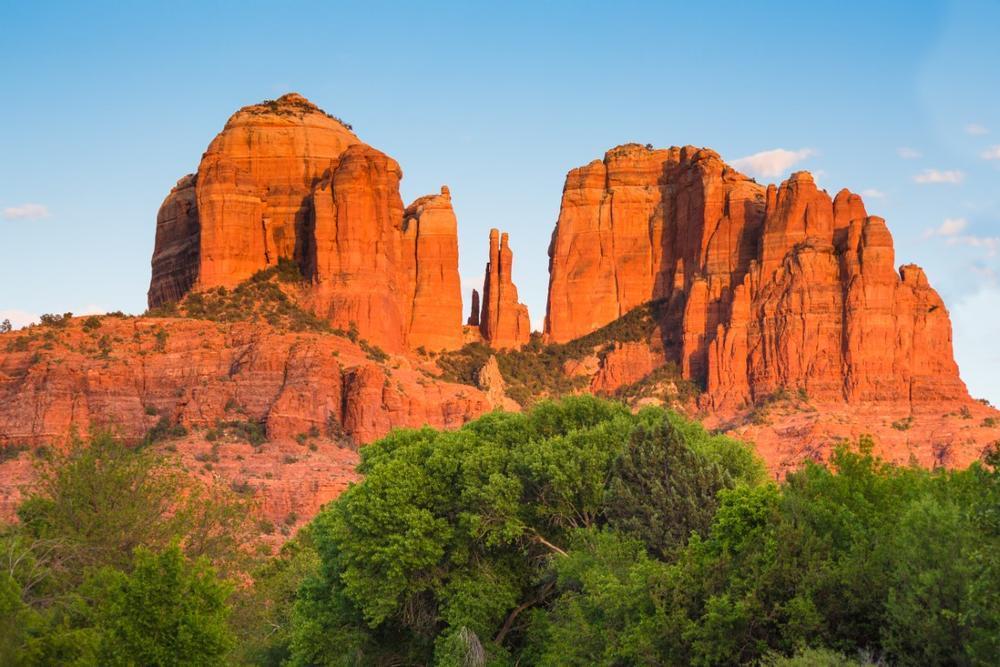
10. Sedona
This has to be one of my absolute favorite Arizona day trips, and every time I visit, I feel like I’ve discovered a new hidden gem in the desert.
We drove about 2 hours north from Phoenix to Sedona (population 9,700), long regarded as a sacred landscape by the Yavapai and Apache people.
Just about two hours north of Phoenix, it’s an easy and affordable getaway that offers some of the most spectacular red rock views I’ve ever seen.
I loved hiking Cathedral Rock at sunrise—seeing the glowing cliffs was such a magical experience that felt like stepping into a dream.
My favorite part of the trip was exploring Oak Creek Canyon, where the water, the trees, and the vibrant colors created such a cool contrast to the desert around it.
I also found the Chapel of the Holy Cross to be one of the most unique and unusual landmarks in Sedona—it’s built right into the rocks, and the views are absolutely breathtaking.
We stopped in Uptown Sedona for shopping and lunch, and I thought the mix of local art galleries, southwestern jewelry, and cozy cafes made the whole vibe joyful and exciting.
I couldn’t resist the Pink Jeep Tour, and honestly, it was the coolest adventure—bumpy, fun, and showing us hidden corners of the red rocks I would never have seen on my own.
- Location: North-central Arizona, in the Verde Valley amid red rock formations and the Coconino National Forest
- Map & Directions
What I loved best:
For me, the absolute best way to end the day was watching the sunset at Airport Mesa, where the whole sky turned shades of orange, pink, and purple—it was a spectacular moment I’ll never forget that completely won me over.
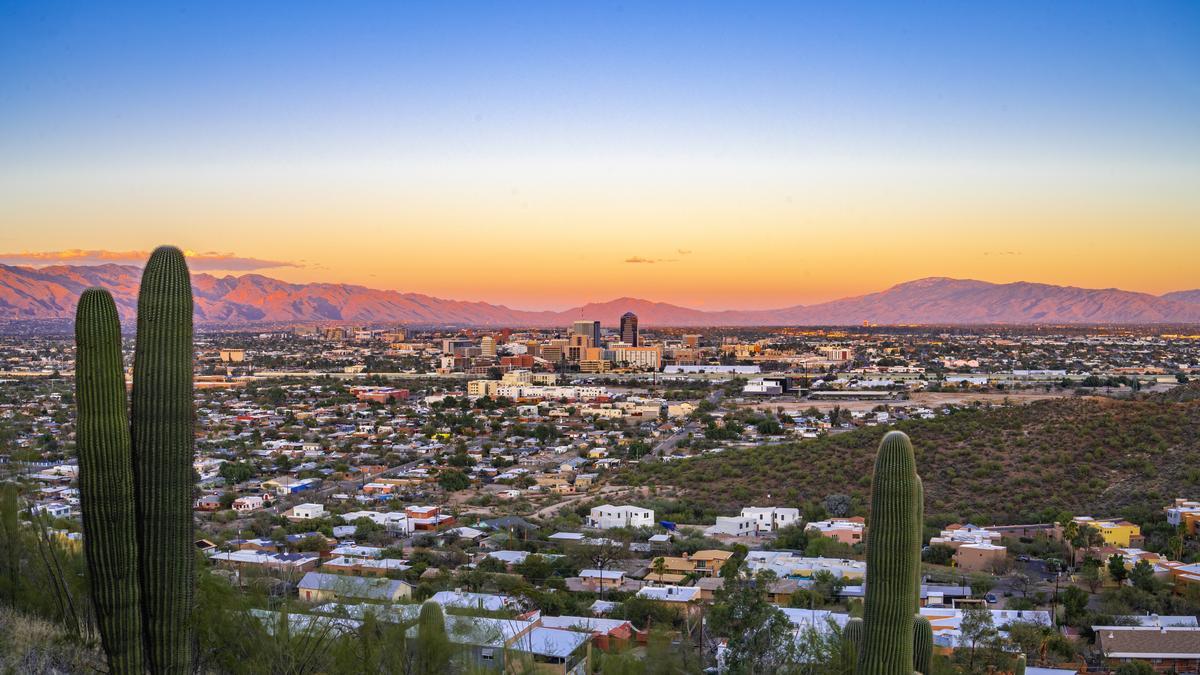
11. Tucson
Ready for a history-rich desert escape? Check out Tucson, a real standout! Just a couple of hours south of Phoenix, this city is surrounded by stunning mountains and desert landscapes, making it an affordable and spectacular day trip or weekend escape.
We drove about 2 hours southeast from Phoenix to Tucson, a city with roots stretching back more than 4,000 years.
One of the coolest ways I explored the city was on a Tucson Bike Tour, which gave me the chance to see historic neighborhoods, colorful murals, and hidden gems I would have missed otherwise.
I loved stopping by the Philabaum Glass Gallery & Studio, where the unusual and vibrant glass art left me in absolute awe—it’s such an underrated gem that feels both creative and inspiring.
My favorite experience was spending the day at the Arizona-Sonora Desert Museum, a mix of zoo, botanical garden, and science center that gave me the absolute best insight into desert life.
We also ventured into Saguaro National Park to hike among the towering cacti, and the views were so magical and unique that I’ll never forget them.
In downtown Tucson, I found joyful energy everywhere—from quirky shops and vibrant street art to some of the most delicious tacos I’ve ever had.
- Location: Southern Arizona in the Sonoran Desert, surrounded by multiple mountain ranges including the Santa Catalinas
- Map & Directions
What I loved best:
For me, the absolute best way to end the trip was heading up to Mount Lemmon for stargazing—the night sky was brilliant, cool, and spectacular.
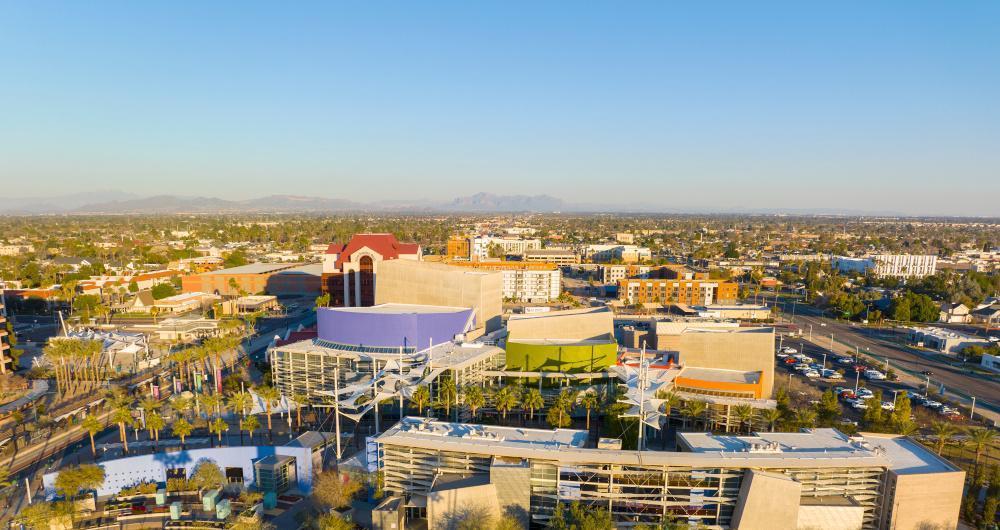
12. Mesa
This is one of my favorite underrated places to visit in Arizona, a joyful mix of culture, food, and outdoor adventure.
We drove about 25 minutes east from Phoenix to Mesa, Arizona’s third-largest city.
Just east of Phoenix, it makes for an affordable and easy getaway that always surprises me with hidden gems and unique experiences.
One of the absolute best parts of my trip was starting the morning at T.C. Eggington’s, a local favorite for breakfast—the creative omelets and fresh-baked muffins were the perfect fuel for a day of exploring.
I loved spending time at the Mesa Arts Center, a vibrant hub filled with galleries, live performances, and colorful public art that gave the whole area such an exciting and creative energy.
My favorite outdoor escape was hiking at Usery Mountain Regional Park, where the desert trails and spectacular sunset views felt almost magical.
We also explored the Arizona Museum of Natural History, which turned out to be one of the coolest and most family-friendly places in town, complete with dinosaurs and interactive exhibits.
- Location: Central Arizona in the Phoenix metropolitan area, east of Phoenix in the Sonoran Desert
- Map & Directions
What I loved best:
The downtown area, with its murals, local shops, and affordable restaurants was my favorite highlight because it had such a vibrant and underrated vibe.
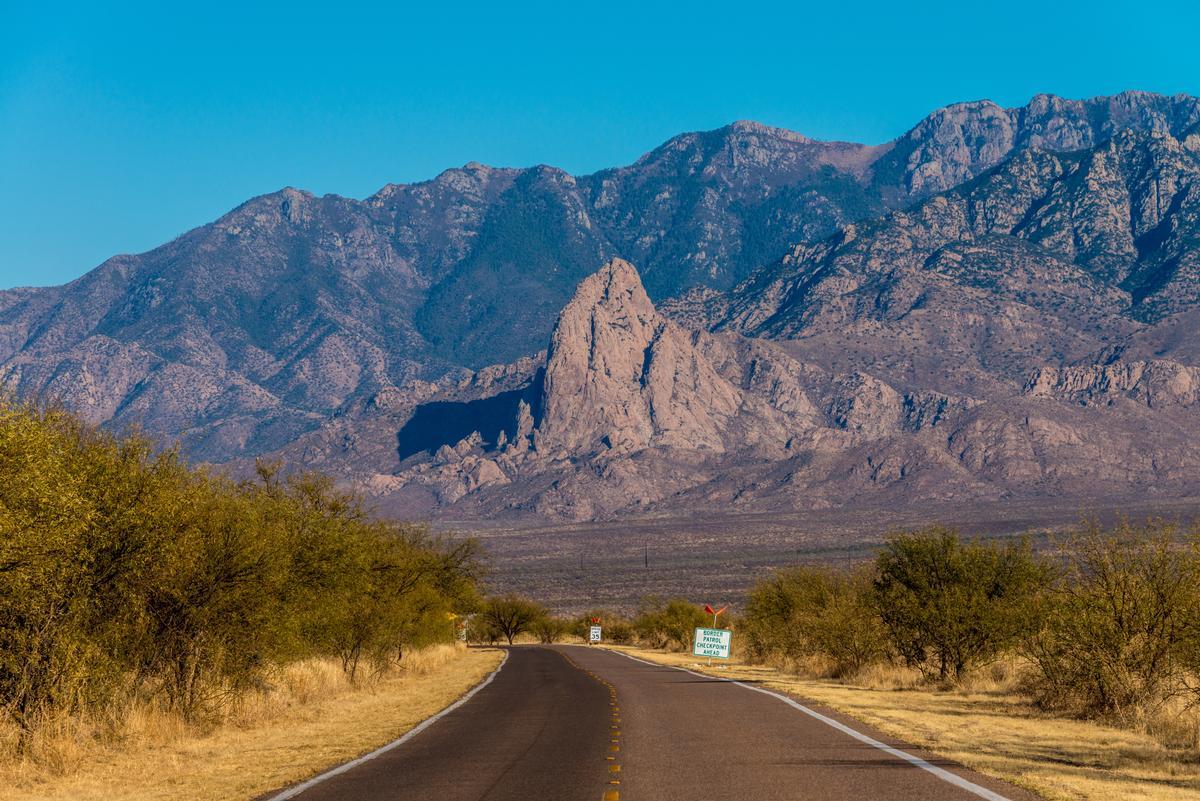
13. Green Valley
This is one of my favorite underrated gems in the southern part of the state, and every visit feels both relaxing and inspiring.
My first stop is the Green Valley Farmers and Artisans Market, the largest and longest running marketplace in the area. Every Wednesday morning, the market comes to life with a wide array of local small food businesses and artisans and you can walk through the large marketplace and discover beautiful jewelry, unique artisan goods, and southwest products for their taste buds and home.
Just about half an hour south of Tucson, it’s an affordable and easy getway that combines small-town charm with some of the most unique desert experiences.
I loved exploring the nearby Titan Missile Museum—its such a cool and unusual place where you can actually step into a real Cold War missile silo and learn fascinating history.
One of the best parts of Green Valley for me was the proximity to Madera Canyon, a hidden gem filled with pine trees, streams, and incredible birdwatching—it felt like a magical escape from the desert heat.
We also enjoyed golfing at one of the many local courses, and the spectacular mountain views made the whole experience joyful and relaxing.
My favorite cultural stop was Tubac, just a short drive away, where the vibrant art galleries, shops, and historic mission created such an exciting and creative atmosphere.
I couldn’t resist sampling the local food, and I thought the Mexican restaurants here were some of the absolute best—affordable, authentic, and delicious.
- Location: Southern Arizona in the Santa Cruz Valley, south of Tucson near the Santa Rita Mountains
- Map & Directions
What I loved best:
For me, the coolest surprise was how peaceful this place felt at night, with brilliant desert skies perfect for stargazing.
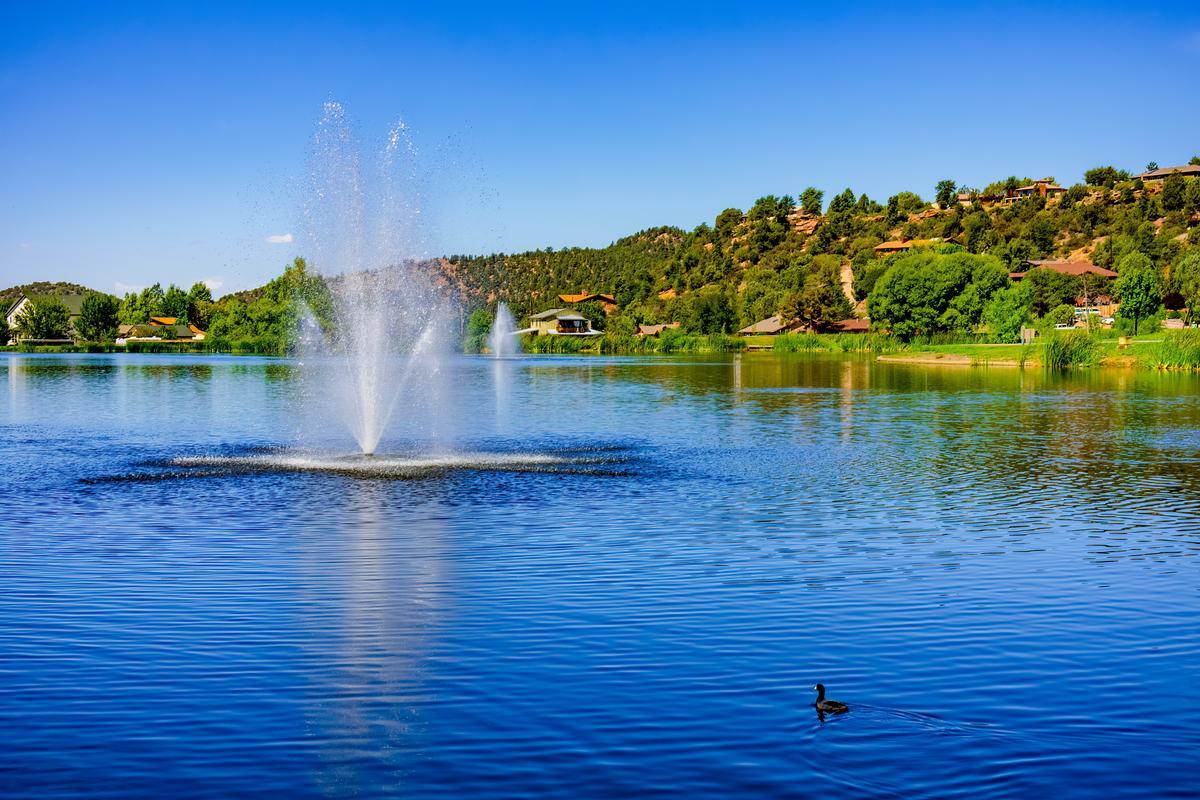
14. Payson, Arizona
Sitting beneath the edge of the Mogollon Rim, this is one of the most beautifully unspoiled mountain landscapes I’ve explored in Arizona, and I think it’s one of the best nature escapes in the state.
I loved how it had a laid-back, small-town vibe mixed with Western heritage and a strong outdoors culture. It sits in central Arizona, surrounded by the largest stand of ponderosa pines in the world, and is home to around 10,000 people today.
I stayed at 3-star Kohl's Ranch Lodge for three days and explored the Tonto Natural Bridge State Park (a spectacular limestone arch), wandered through the historic Main Street with its old-west style shops, and hiked on the trails at Horton Creek with waterfalls tumbling through the forest.
I also learned about local Native American history at the Rim Country Museum, spotted wild elk in the meadows, and took a scenic drive up to the Mogollon Rim Road for sweeping views across the high country.
- Location: North-central Arizona on the Mogollon Rim, surrounded by the Tonto National Forest
- Map & Directions
What I loved best:
I enjoyed stargazing under the famously dark skies, a real standout.
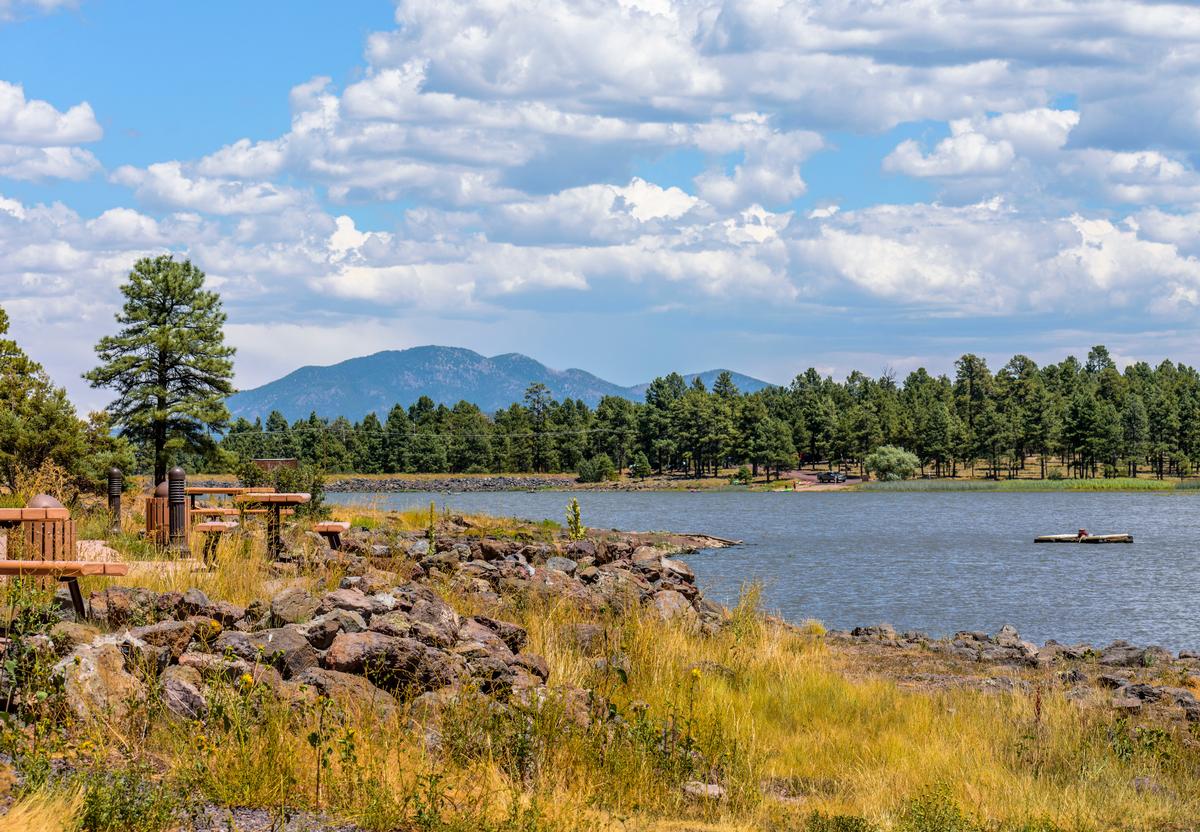
15. Williams, Arizona
I think it’s one of the state’s best high-elevation escapes! March was an incredible time to visit Williams — crisp mountain air, bright blue skies, and the first hints of spring melting into the lingering snow. I’d learned that March is the sweet spot between the quiet of winter and the bustle of summer Grand Canyon traffic — cool enough for cozy nights, yet warm enough to explore comfortably by day.
After a scenic drive along historic Route 66, I spent a few magical nights at Clear Sky Resorts Grand Canyon, where I stayed in one of their futuristic sky domes. Falling asleep beneath a canopy of stars through the clear geodesic ceiling was unreal — no light pollution, just the Milky Way stretching endlessly overhead. By day, I wandered through downtown Williams, with its old-school diners and vintage shops, then rode the historic Grand Canyon Railway for a breathtaking day trip to the South Rim.
Evenings were made for roasting s’mores by the communal fire pits and swapping travel stories with fellow stargazers.
- Location: Northern Arizona on historic Route 66, west of Flagstaff and near the Kaibab National Forest
- Map & Directions
What I loved best:
Though the desert nights dipped below freezing, the serenity and silence of the high plateau made every moment feel otherworldly.
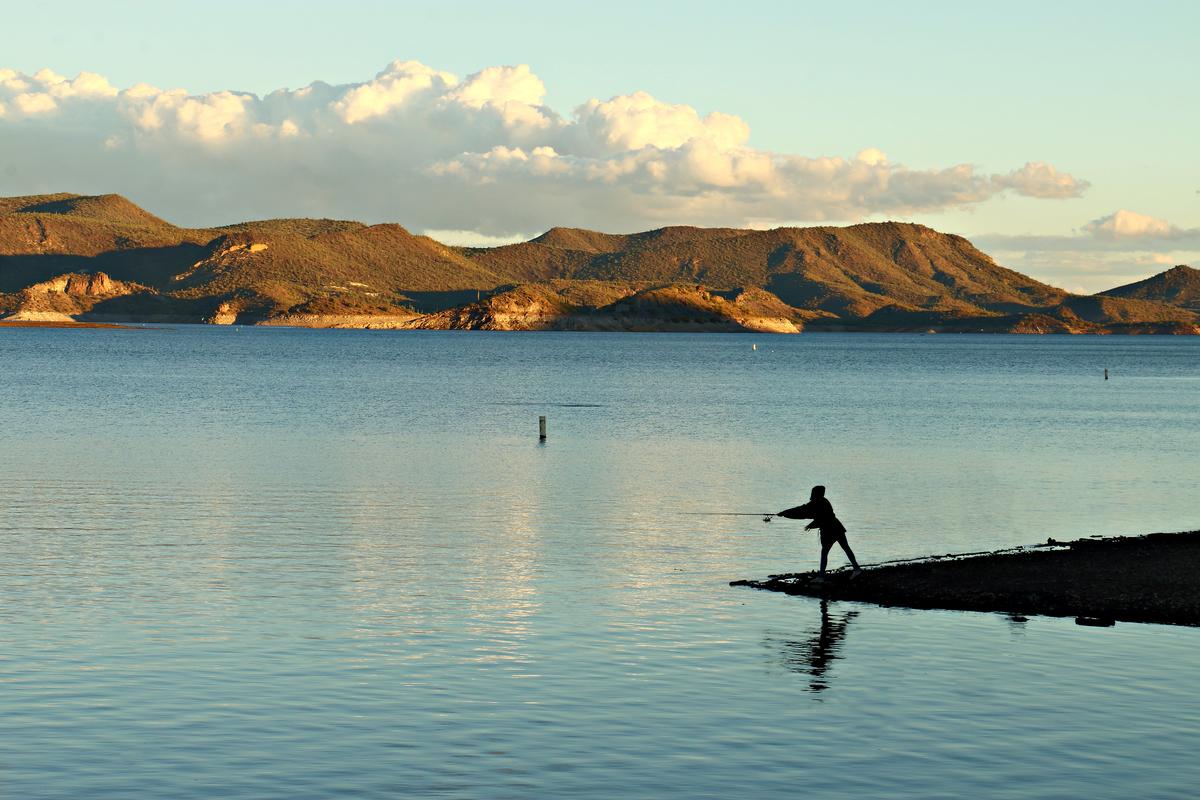
16. Peoria, AZ
Stretching toward the rugged peaks of the Sonoran Desert, this is one of the most surprisingly unspoiled outdoor playgrounds near Phoenix.
Early spring was an incredible time to visit — the Sonoran Desert was in bloom, and the days were warm enough to enjoy the outdoors without the scorching summer heat. I’d learned that early spring is perfect for exploring Lake Pleasant before the high-season crowds roll in, with clear skies, gentle breezes, and water still cool and glassy in the morning light.
After arriving via Phoenix Sky Harbor International Airport, I made my base near Lake Pleasant Regional Park, spending sunny afternoons out on the water with by renting a boat and cruising across the vast lake surrounded by rugged desert hills felt like discovering an oasis — I even spotted a few wild burros along the shoreline! On other days, I hiked the scenic Pipeline Canyon Trail.
Evenings were for casual lakeside dinners and quiet nights under the stars, the air scented with creosote and mesquite.
- Location: Central Arizona in the northwest Phoenix metropolitan area, extending into the Sonoran Desert foothills
- Map & Directions
What I loved best:
Watching the sunset paint the desert gold and violet from the marina’s overlook was my favorite highlight.
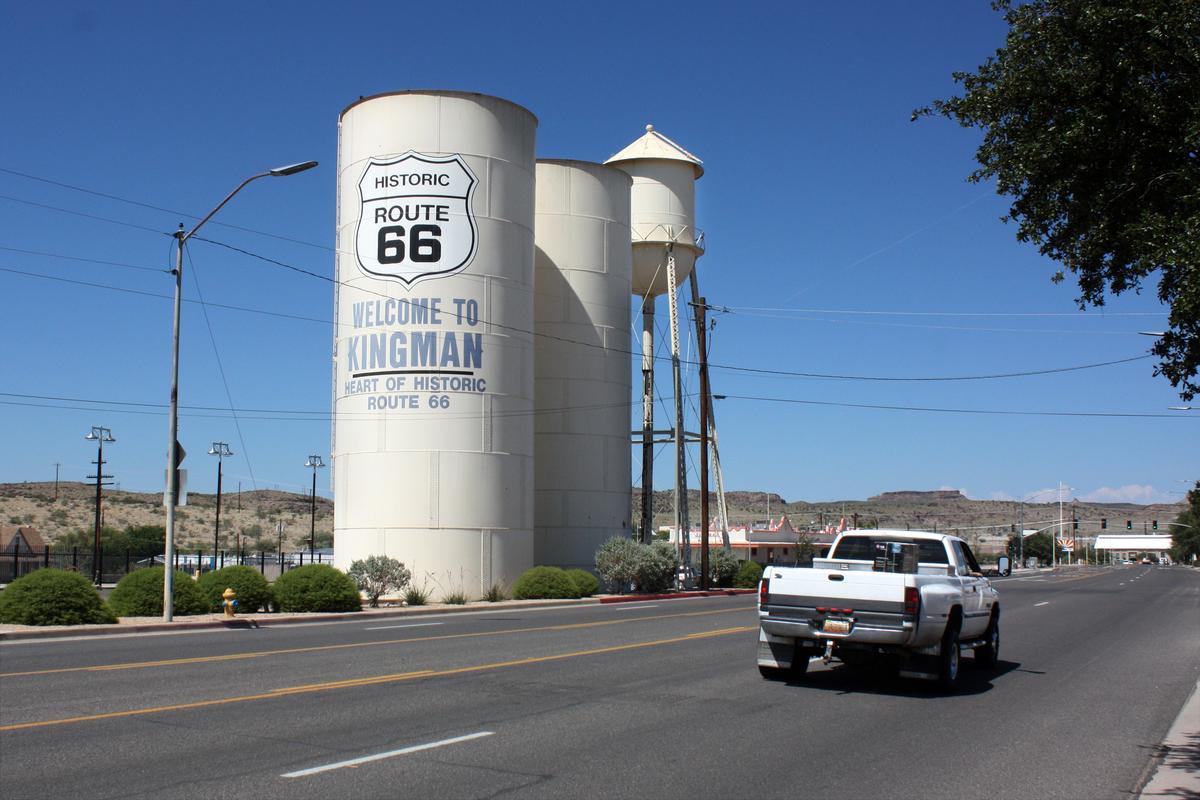
17. Kingman, AZ
Ready for a history-rich Route 66 escape? This high-desert town, surrounded by rugged peaks and classic Americana, is one of my favorite places to visit when I want a day packed with variety.
After driving in along Historic Route 66, I checked into El Trovatore Motel for two relaxing day, a retro-style motel that felt like a step back in time, complete with neon lights and vintage charm. My days were filled with exploring the Route 66 Museum, where old photographs and gleaming classic cars told the story of America’s great road adventure, and wandering through the revitalized downtown lined with murals and cozy diners. The surrounding Mojave landscape offered scenic hikes and views that stretched to the horizon — wild, vast, and unforgettable.
- Location: Northwestern Arizona along historic Route 66, near the Hualapai Mountains and close to the Nevada border
- Map & Directions
What I loved best:
Evenings were cinematic and my favorite highlight — the kind of dusky calm that makes you want to sit on the hood of your car and watch the stars appear one by one.
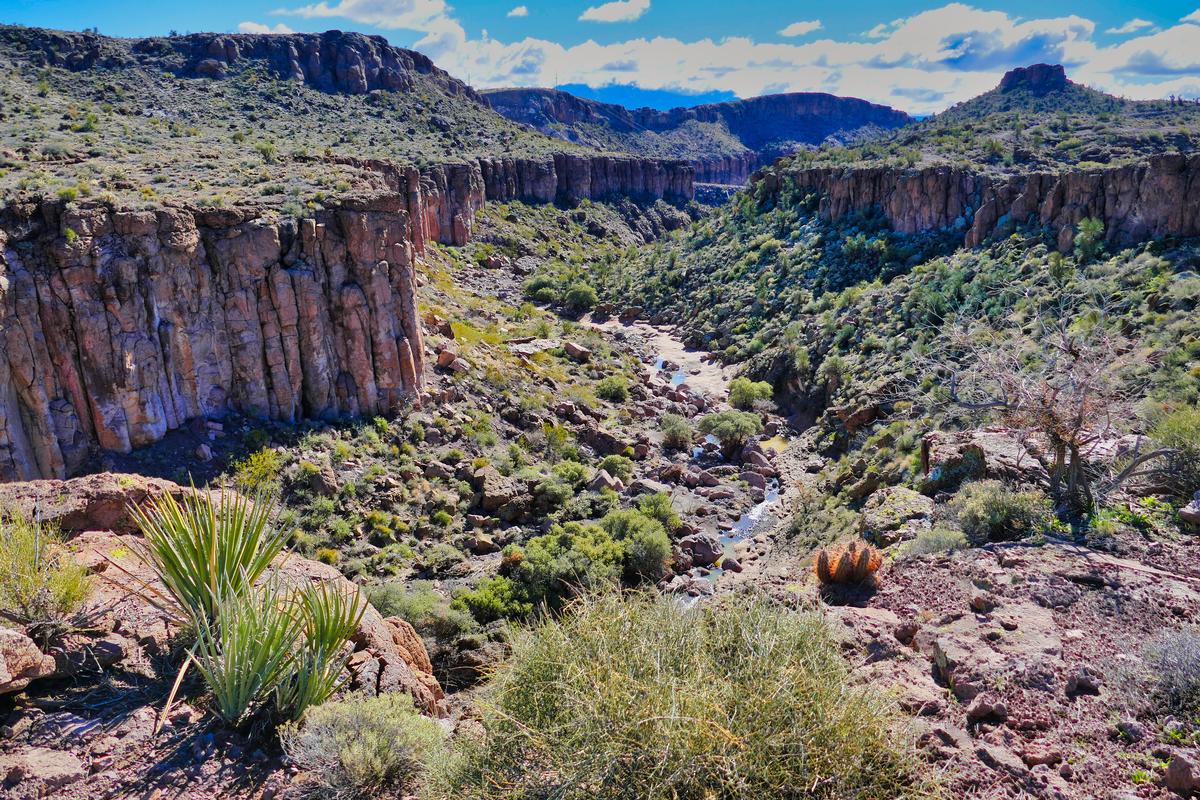
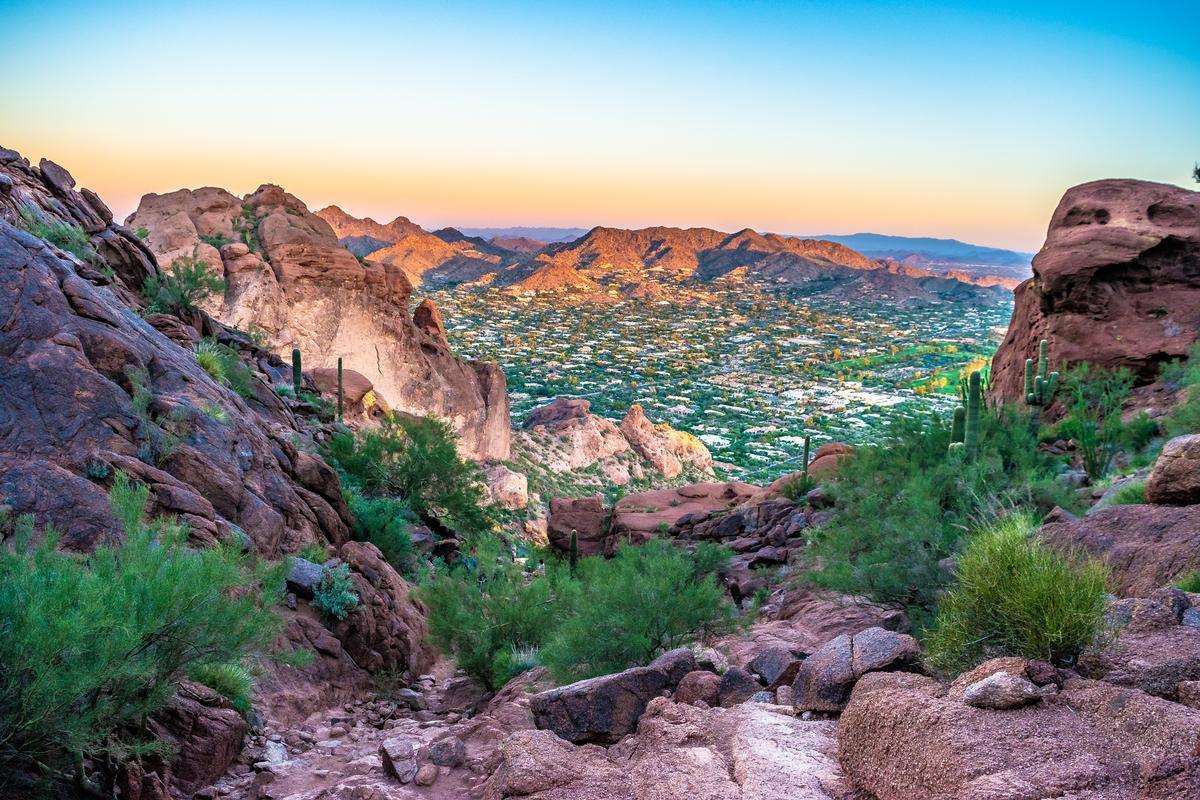
18. Phoenix for Kids
This place might be Arizona’s buzzing capital, but for families, it transforms into the best playground of sunshine, discovery, and kid-friendly adventure. Beneath the city’s palm-lined boulevards and desert skies, my son, husband and I found an incredible mix of hands-on learning, outdoor exploration, and pure fun!
We stayed at the 4-star Scottsdale Plaza Resort & Villas for two days. Another one of my favorites is Arizona Grand Resort & Spa, AAA Four-Diamond all-suite resort.
- Location: Central Arizona in the Sonoran Desert, in the heart of the Greater Phoenix metropolitan area
- Map & Directions
What I loved best:
Just a short stroll from downtown’s arts district brought us to the Children’s Museum of Phoenix's a wonderland for young minds and my favorite highlight. With three floors of colorful exhibits, kids could climb a towering three-story play structure, experiment in the imaginative “Pedal Power” zone, create masterpieces in the art studio, and even shop and cook in a pint-sized market. The museum’s mission—to engage minds, muscles, and imaginations—was in full swing, and I loved how every corner invited curiosity.
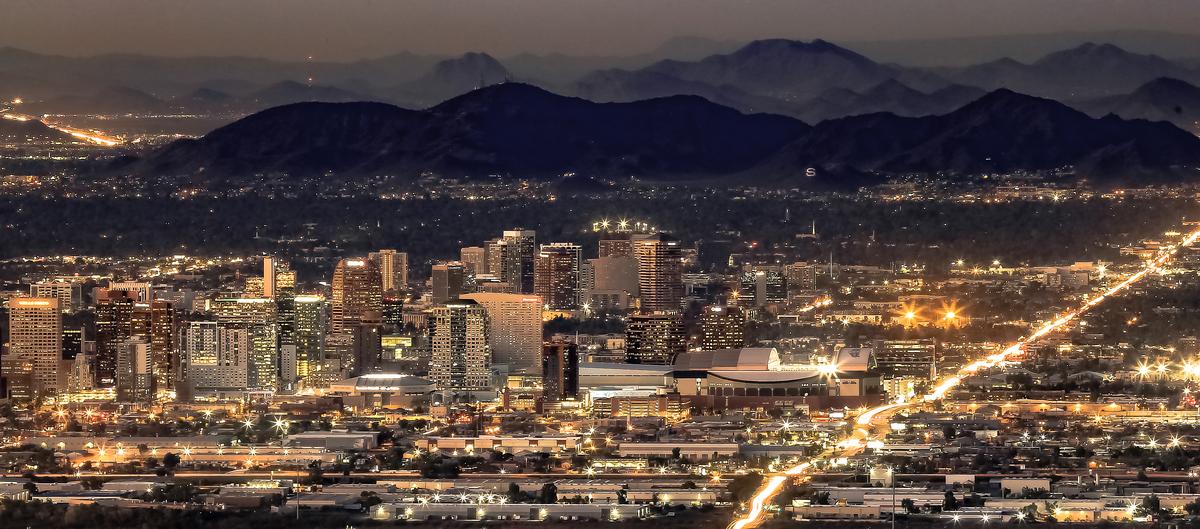
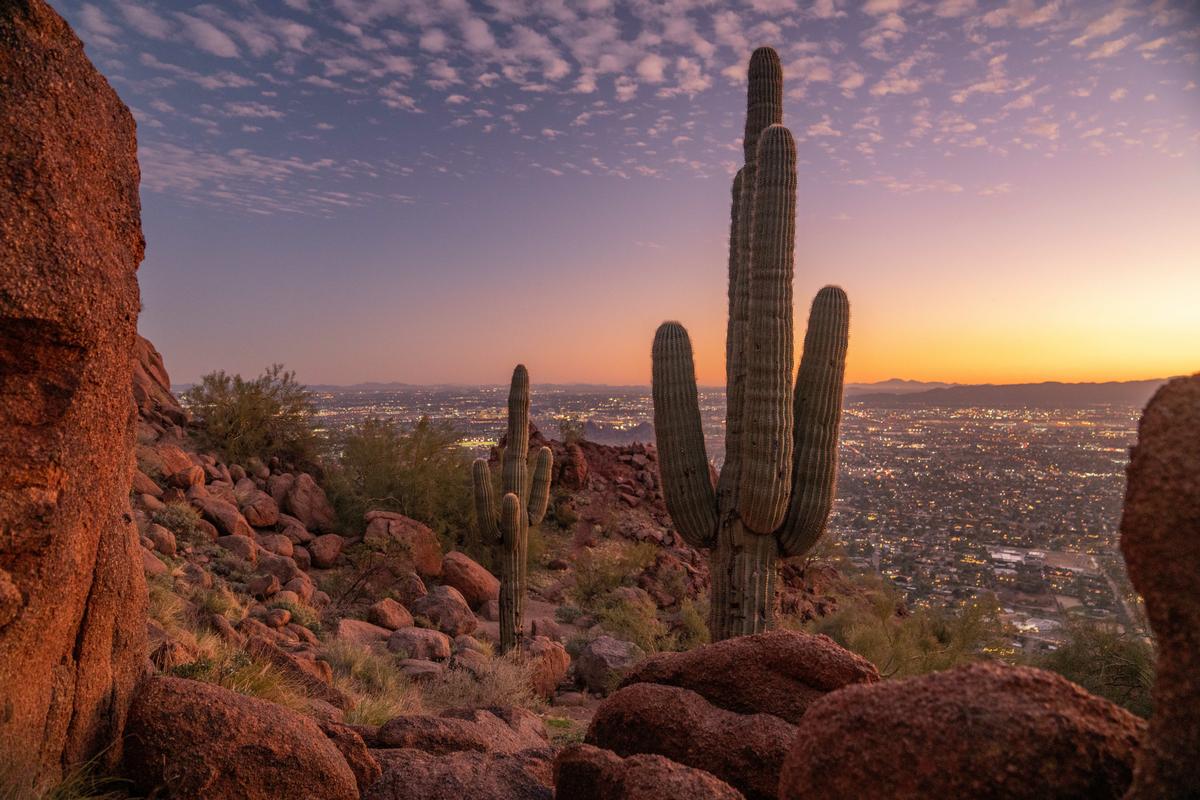
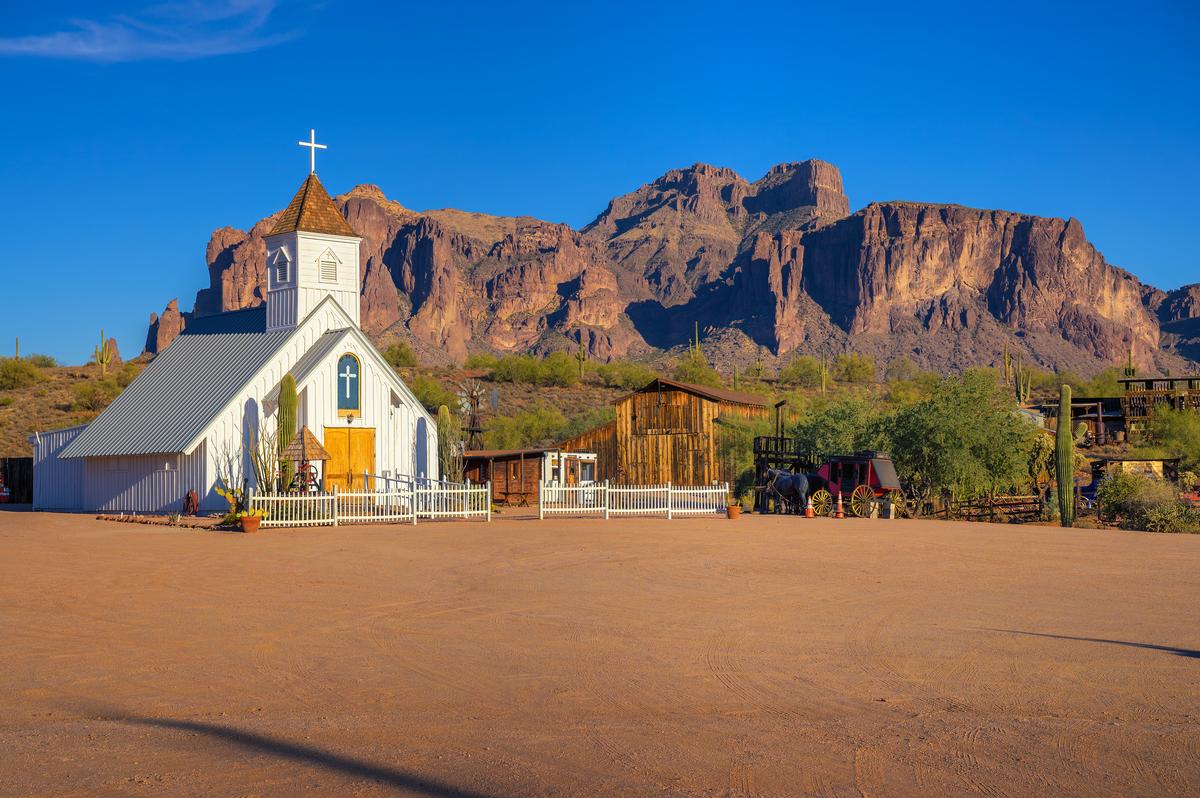
19. Apache Junction
Ready for a dramatic desert retreat? This is one of my favorite underrated gems on the eastern edge of the Phoenix metro area, and every visit feels both rugged and rejuvenating.
My first stop is the Superstition Mountain Museum, a fascinating introduction to the region’s Wild West history and local legends. Set against the dramatic backdrop of the Superstitions, the museum grounds showcase historic buildings, gold-rush lore, and rotating exhibits that highlight the mystery and charm of the area.
Every weekend, the nearby Mesa Market Place Swap Meet becomes a bustling scene filled with local artisans, handmade crafts, and unique desert-inspired goods. It’s easy to spend a morning wandering through the stalls, finding everything from creative décor to fresh snacks and quirky Arizona souvenirs.
Just a short drive from Phoenix, Apache Junction is an affordable and easy getaway that blends small-town friendliness with some of the most striking desert scenery in the state.
One of the most unforgettable experiences is exploring the Lost Dutchman State Park, where the rugged trails lead you through towering saguaros, wildflowers in spring, and breathtaking views of the Superstition Mountains. The park is steeped in the legend of the Lost Dutchman Gold Mine, adding an air of mystery to the landscape.
Another highlight for me was driving the Apache Trail (AZ-88)—a historic desert route that winds past canyons, lakes, and dramatic cliffs. Even just going as far as Canyon Lake feels like entering another world. The shimmering water tucked between weathered rock formations is perfect for kayaking, boating, or simply enjoying the views from the marina.
We also loved stepping back in time at Goldfield Ghost Town, a reconstructed 1890s mining town complete with live reenactments, old-fashioned shops, and a narrow-gauge railway. It’s touristy in the best possible way—fun, immersive, and full of character.
My favorite cultural stop was the Superstition Center for the Arts, where local painters, sculptors, and photographers showcase pieces inspired by the desert light and rugged mountain landscapes. The creative energy here feels vibrant and uniquely tied to the region.
Of course, I couldn’t resist the local food scene. From hearty cowboy-style breakfasts to delicious Mexican restaurants with decades-long legacies, Apache Junction offers a surprising variety of affordable and flavorful options.
- Location: Eastern edge of the Phoenix metro area, near the base of the Superstition Mountains and bordering the Tonto National Forest.
- Map & Directions
For me, Apache Junction is one of the best places to visit in Arizona because it's scenic, affordable, and hope you will love it too! What I loved best:
For me, the absolute standout was the way the Superstition Mountains glow at sunset, their cliffs turning fiery red and gold. And at night, when the city lights fade, the quiet desert skies here are a perfect spot for stargazing—peaceful, dramatic, and unforgettable.
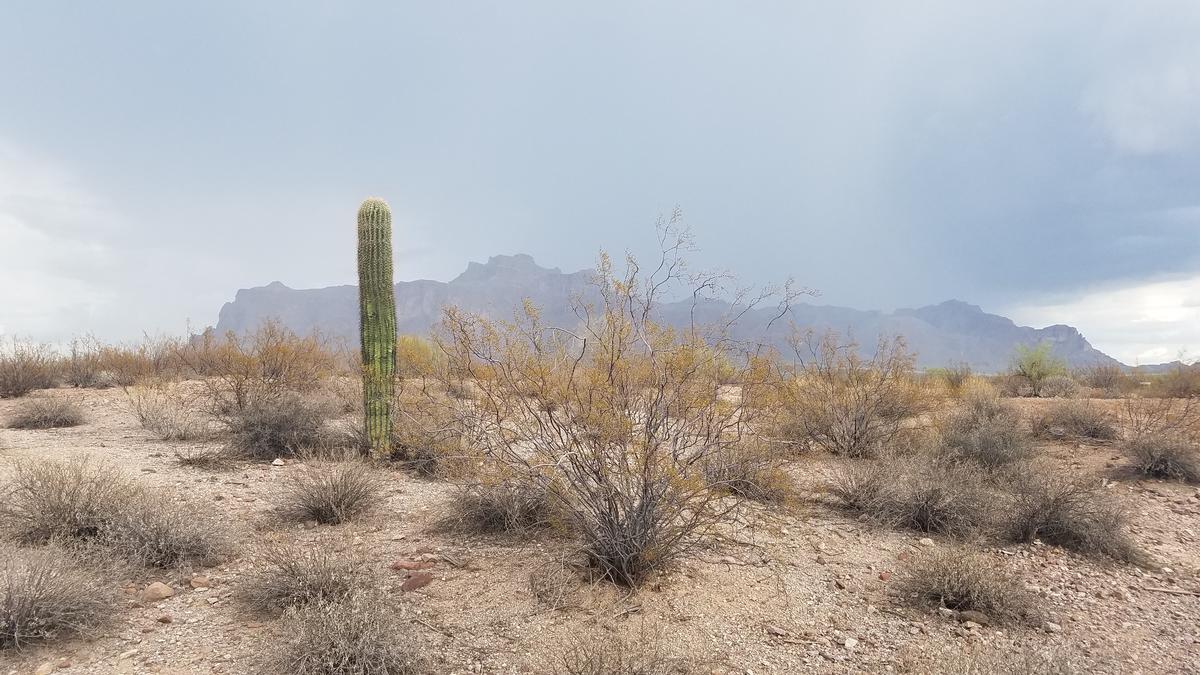
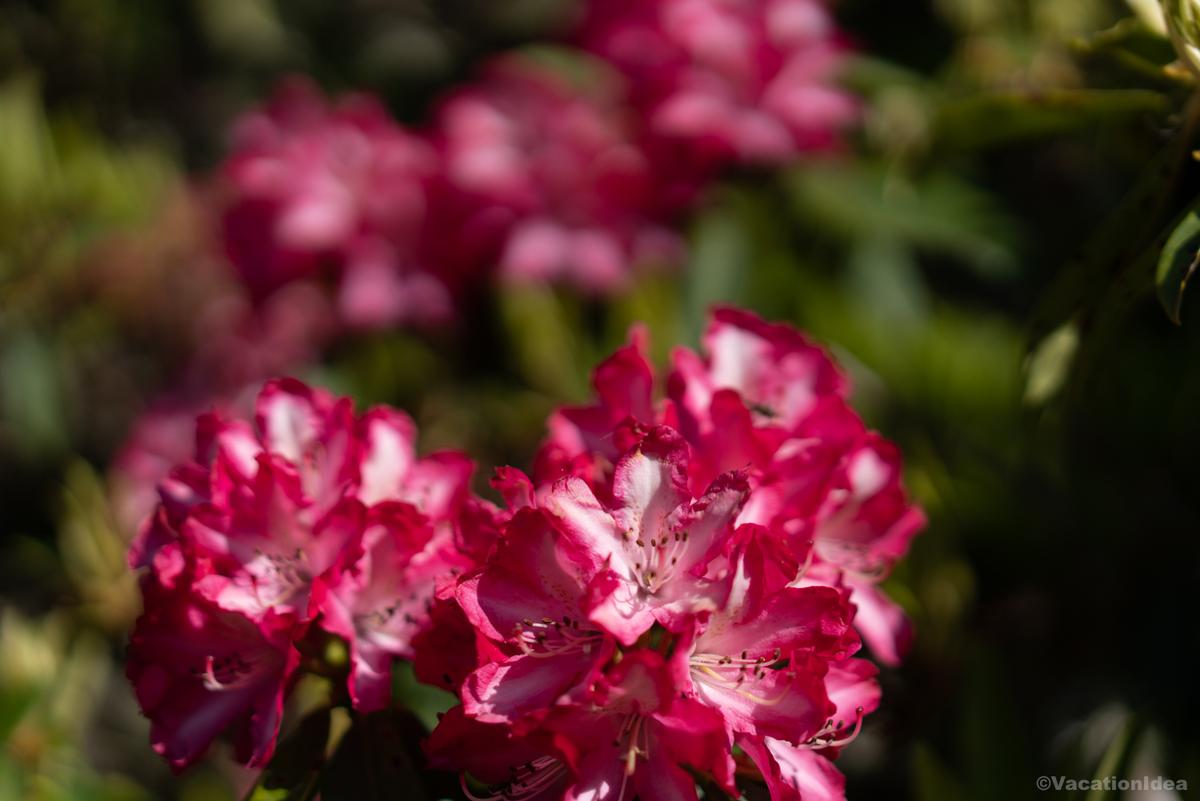
Booking Checklist
1. Book Your Flight - I use Expedia because I like their mobile app with my itinerary. They've helped me re-book flights on many occasions. Once you reach their Gold tier, support is especially good.
2. Book Your Hotel - I use Booking.com or Expedia, depending on my destination.
3. Book Your Rental Car - I use Expedia.
4. Book your tours on Viator or Get Your Guide.
5. If you are planning to visit more than three national parks in the next 12 months, buy the America the Beautiful Pass.
